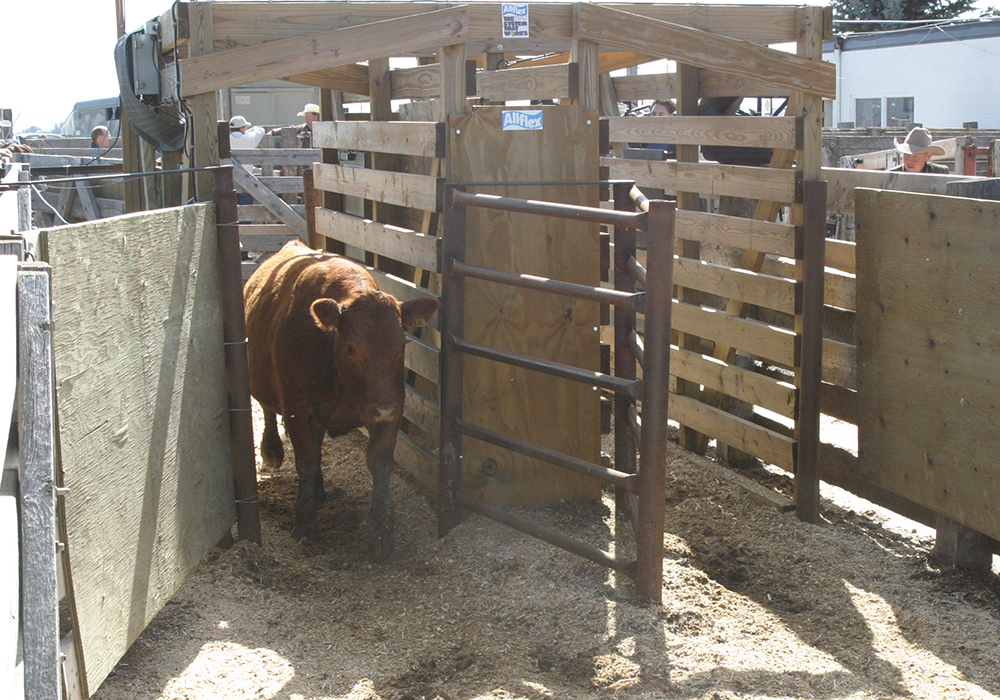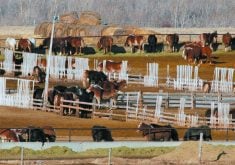More and more animal health products and procedures are being combined. They are designed to reduce labour, needle use and in some cases, passes through the chute.
Some products come in methods that require no handling of the animals at all, which may be a labour saver as well.
It is important to consider the stresses created by gathering and processing the animals, even though it might be minimal in many places because of facilities and staff.
In the bison industry, anything we can do to minimize processing time or eliminate a processing procedure because a remote delivery system exists is worth looking at.
Read Also

Saskatchewan dairy farm breeds international champion
A Saskatchewan bred cow made history at the 2025 World Dairy Expo in Madison, Wisconsin, when she was named grand champion in the five-year-old Holstein class.
Also, there have been many improvements with multivalent intranasal vaccines delivered to very young calves that makes the procedure easy.
Neck bars on most chutes have made intranasal vaccines easier to deliver, even to larger stock.
Producers today give more NSAIDs (pain killers or analgesics) in combination with antimicrobials and other treatments than in the past. Two combination products available combine an antibiotic (florphenicol) and an NSAID. This is probably the number one treatment combination for respiratory disease.
As well, I am seeing more injectable products in plastic bottles, which decreases breakage and the need for awkward bottle protectors.
NSAIDs can be administered in unobtrusive ways — pour-on or oral forms delivered with a hooked drenching gun in the case of the oral meloxicams.
In my practice, I was striving for products to give subcutaneously and with a lower dosage to try and minimize irritation and swelling.
If this is your goal, seek out these products. As an example, only one or two of the selenium injectable products are given subcutaneously and one of the scours vaccines is given subcutaneously.
Timing is everything with scours vaccines so use the product that fits your timing before calving.
The injectable A-D vitamin dose is thick and somewhat irritating. Hopefully a company will come up with a product we can give orally.
We do lots of procedures to new-born calves and I have often felt if we can be less obtrusive, better health outcomes will result.
NSAIDs have been a regular add-on in spring processing — branding and castration. Some producers have taken this to the next level by giving NSAIDs at castration, at birth, when ear-tagging or giving injections to decrease this stress. It’s a wise move in my eyes and low cost because of the low dose to a newborn calf. Also because of the large number of NSAIDs on the market, overall cost has come down.
We have almost totally moved away from most products for treatment where daily care injections are needed. The rare exception may be potentiated sulphonamides for things like coccidiosis or calf scours when you actually have a bacterial scours problem. Such issues are becoming less common because of proper management and scours vaccines.
The longer-acting products are the mainstay when antimicrobials are needed. This cuts down stress of handling and the pain of injections.
In many cases antimicrobials are being cut out completely or drastically reduced by our prudent use. I want to congratulate the producers and veterinarians who have seriously looked at that and have been able to reduce antimicrobial use while still using it when necessary. Your veterinarian should know the best way to proceed.
Antibiotics for castrations, in many cases, have been eliminated, as is also the case in many scours treatments because other products such as electrolytes and NSAIDs are much more effective.
Antibiotics don’t work against viruses so other ancillary treatments are often used.
Good methods stand the test of time and antimicrobials in feed when properly applied can evenly treat a pen with the good feed mixers we have today. The mixing must be thorough but old products like monensin (Rumensin), and newer ones like Optaflexx, are still very accurate and require no handling of the animals.
The issue here is record-keeping. Computer programs and clearly laid out standard operating procedures help immensely with that.
Other items, such as dewormers, have been formulated orally in feed or are water soluble and put through the drinking water. That is helpful in swine and poultry production, where watering systems make it easy to medicate one pen at the appropriate time.
Combination products, methods of administration and handling systems are all attempting to do more with less labour and stress.
Producers’ challenge is finding which of these points fits into their management program or seek out the proper advice and consultation to make them happen.
Roy Lewis works as a veterinarian in Alberta.















